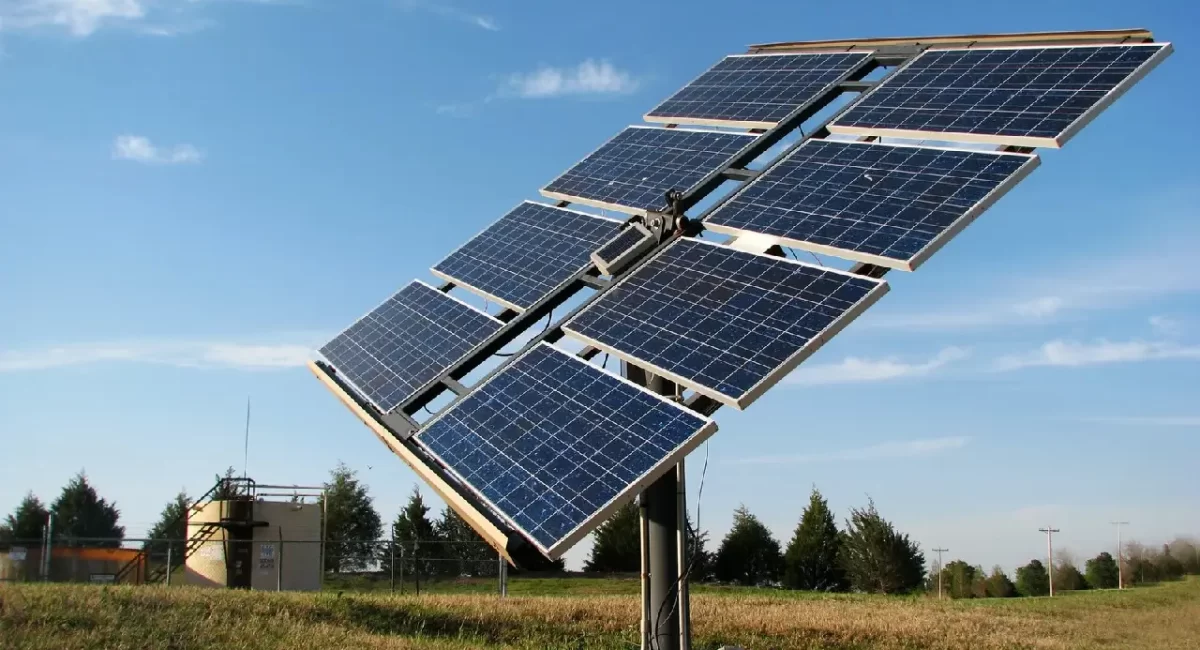Single-axis solar trackers
A single-axis tracker moves your panels on one axis of movement, usually aligned with north and south. These setups allow your panels to arc from east to west and track the sun as it rises and sets, increasing the output of your system without adding more solar panels
Despite their high upfront installation costs and recurring maintenance costs, single-axis solar trackers can increase your solar system’s efficiency enough to make up for these expenses quickly. It’s important to install a single-axis tracking system on flat land in a generally warm and dry area.
Dual-axis solar trackers
A dual-axis tracker allows your panels to move on two axes, aligned both north-south and east- west. This type of system is designed to maximize your solar energy collection throughout the year by using algorithms and sensors that track seasonal variations in the height of the sun in addition to normal daily motion. Typically, dual-axis trackers (made by companies like All Earth Renewables) are a much less popular option for solar installations, even among large, utility-scale projects.
Dual-axis trackers might be appropriate for some commercial properties – they can produce up to 45 percent more energy than typical static panels, helping businesses produce enough power to fuel their operations despite limited rooftop space for solar panels. Utility-scale installations usually don’t need dual-axis setups because they’re located on large plots of land without the tight space constraints of a commercial roof space. Pros and cons of dual-axis solar trackers

Planning
Research
Process
Happen
Wind Power - Clean and Efficient



Advantages of Wind Power
- Digital project planning and resourcing public procurement.
- In-House digital consulting output for fifteen years.
- Permanent and contract recruitement renewable energy in Ireland.
- Developers and technical architects after natural gas.

